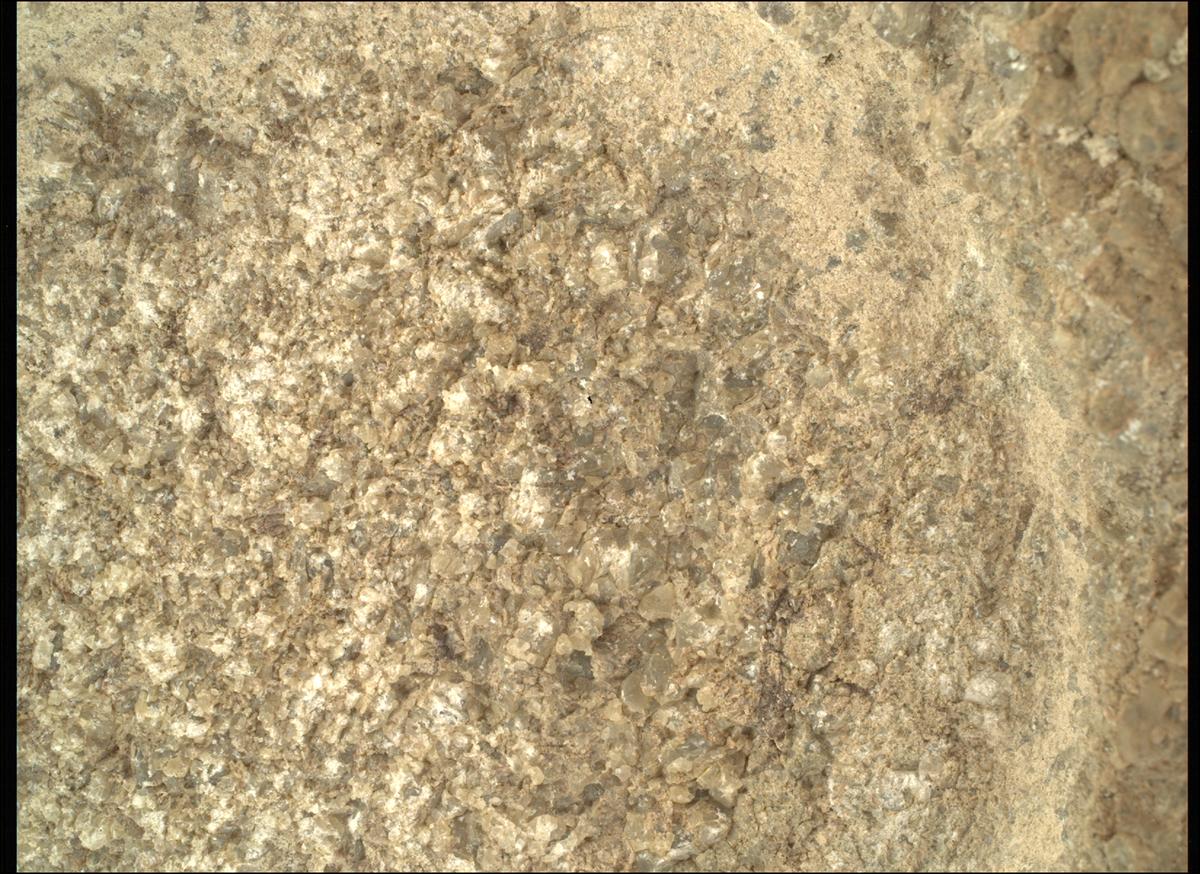this post was submitted on 19 Dec 2024
25 points (100.0% liked)
NASA's Perseverance Mars Rover
1511 readers
2 users here now
On the plains of Jezero, the secrets of Mars' past await us! Follow for the latest news, updates, pretty pics, and community discussion on NASA and the Jet Propulsion Laboratory's most ambitious mission to Mars!
founded 2 years ago
MODERATORS
you are viewing a single comment's thread
view the rest of the comments
view the rest of the comments

Neat! What are we hoping to learn from the abrasion patches?
The rover abrades rocks using a tool on its robotic arm before drilling them in order to clear away dust and weathering rinds, allowing other instruments to study the rocks and determine if scientists want to grab a sample of them. In this case after studying this patch the team decided not to take a sample at this stage, and have just driven away from the location. This could be because they have a limited supply of empty sample tubes, and they want to check the region thoroughly before deciding which targets to obtain a rock core for sample return.
Thanks! Makes sense that they want to be fairly selective in what samples they store. I hope Mars Sample Return isn't delayed too much further.
A great deal.
The above is not a complete list. The dust and weathering rinds Paul Hammond mentions (the undisturbed outer surface of the rock), in general, prevent you from answering these questions in the same detail, or at all. By answering the first two questions above, you get a good idea of how the rock formed and what it contains (e.g. is this volcanic rock - like from a lava flow - or something laid down in calm water, or something else entirely)?
Generally speaking, if the mission decides to abrade a hole in some rock, it's a sign that the geologists find the stuff interesting, or at least need to identify what's at that spot to make sense of the immediately surrounding landscape.
I'm still working on a series of posts explaining all this in more detail - with neat pictures - but it's going to take a while yet (we've made more than 30 of these holes, and they've shown us quite a few different things from start to finish!) Questions are welcome!
Thanks for the detailed write-up! It's awesome how much we can learn (and have already learned) from the Mars rovers.